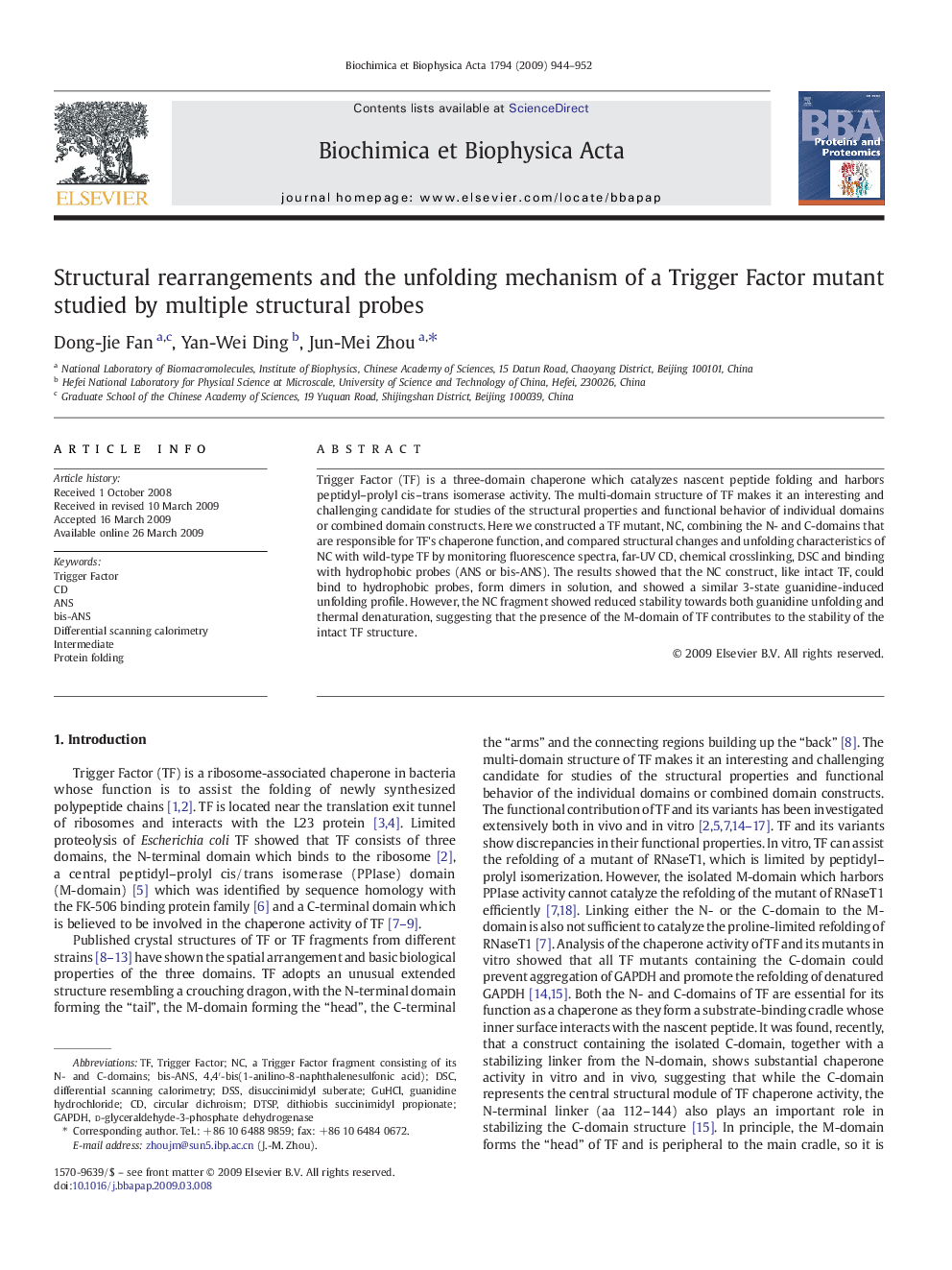| Article ID | Journal | Published Year | Pages | File Type |
|---|---|---|---|---|
| 1180336 | Biochimica et Biophysica Acta (BBA) - Proteins and Proteomics | 2009 | 9 Pages |
Trigger Factor (TF) is a three-domain chaperone which catalyzes nascent peptide folding and harbors peptidyl–prolyl cis–trans isomerase activity. The multi-domain structure of TF makes it an interesting and challenging candidate for studies of the structural properties and functional behavior of individual domains or combined domain constructs. Here we constructed a TF mutant, NC, combining the N- and C-domains that are responsible for TF's chaperone function, and compared structural changes and unfolding characteristics of NC with wild-type TF by monitoring fluorescence spectra, far-UV CD, chemical crosslinking, DSC and binding with hydrophobic probes (ANS or bis-ANS). The results showed that the NC construct, like intact TF, could bind to hydrophobic probes, form dimers in solution, and showed a similar 3-state guanidine-induced unfolding profile. However, the NC fragment showed reduced stability towards both guanidine unfolding and thermal denaturation, suggesting that the presence of the M-domain of TF contributes to the stability of the intact TF structure.
